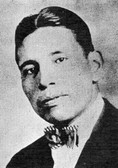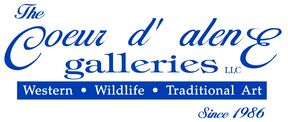William "Fire Bear" Standing
Assiniboine artist of the Big Sky Country (1904 – 1951)

This self-taught artist was born on the remote Fort Peck Reservation in 1904. He became well known in Montana but less so beyond, since he lived in the Big Empty and lacked the contacts for national recognition. Standing admired Charlie Russell and his work often reflects Russell’s “Dreamtime Montana”, wistfully depicting the Big Sky’s journey from old-time buffalo days into the industrialized 20th century. He also sometimes focused a humorous but caustic eye on the reservation problems of his day. Quite versatile, Standing created paintings, sketches, postcards, pen and inks and even cartoons. Scores of his scrupulously accurate pen and inks illustrate "Land of Nakoda", the well-regarded Federal Writers Project account of Assiniboine history and old way of life.
Fire Bear died as his talent was reaching a new maturity, killed in a late night car crash near Zortman. Standing’s work has been praised by Western art authority John Ewers of the Smithsonian Institution… collected by fabled Mint Saloon owner Sid Willis and many others… and exhibited in Washington D.C., Paris and elsewhere. Today it is found in private and public collections around the West.
A full-blood Assiniboine, Standing preferred his Indian name of Fire Bear. But he was also an enterprising businessman who signed his paintings as the white man called him, “William Standing”. He once explained he didn’t mind doing that -- if it made people buy more of them.
Fire Bear died as his talent was reaching a new maturity, killed in a late night car crash near Zortman. Standing’s work has been praised by Western art authority John Ewers of the Smithsonian Institution… collected by fabled Mint Saloon owner Sid Willis and many others… and exhibited in Washington D.C., Paris and elsewhere. Today it is found in private and public collections around the West.
A full-blood Assiniboine, Standing preferred his Indian name of Fire Bear. But he was also an enterprising businessman who signed his paintings as the white man called him, “William Standing”. He once explained he didn’t mind doing that -- if it made people buy more of them.













